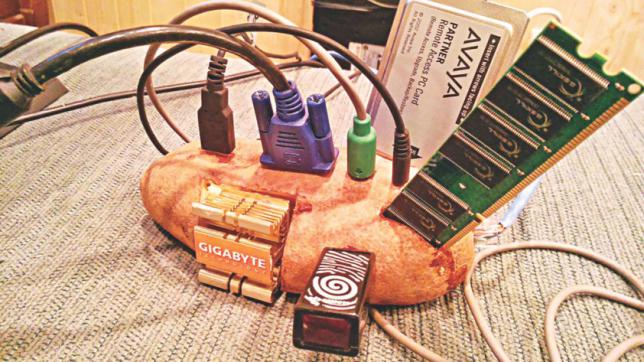Overview
I tested each graphics setting to assess its impact on the FPS, so that you don’t have to.
Introduction
I have the following laptop:
Intel Core i7 3612QM (quad-core, up to 2.8 GHz boost when gaming)
Intel HD 4000 integrated graphics (from 2012!)
4 GB RAM
While the processor is actually pretty good for a laptop, the graphics processor is very outdated and severely bottlenecks the system. As such, it could be considered a “potato”. In the interest of getting stable 60 FPS while looking as good as possible, I have tested each graphics settings to determine the impact it has on FPS and found an optimal setup for this potato.
I’m running game version 2007 from the day after launch.
July 2020 update: I noticed that the game’s Unreal engine version got upgraded, so it’s probably more optimized now than when I wrote this guide. I can’t test this hypothesis because I have since donated the laptop and bought a much better one. Sorry!
The test scene
Testing occurred with the following scene from the very start of the second level. I did not move the camera one bit between each change of settings.

Findings
Resolution scale:
* at 100% = 23 FPS
* at 50% = 60 FPS
The game is running at the laptop’s native resolution of 1366 x 768. I find that reducing resolution scale below 45% doesn’t seem to do anything. It’s probably the lowest it can go for my resolution.
V-sync: ~12 FPS difference (from 60 to 48). No tearing noticed with it off
Effects Quality from Medium to High: 14 FPS difference (from 60 to 46). This seems to turn on Ambient Occlusion.
Shadow quality:
* Medium: -2 FPS vs. Low
* High: -7 FPS vs. Low
* Epic: -23 FPS vs. Low
Because High shadows creates an ugly grey mist permeating the level, I actually prefer the looks of Low shadows.
Anti-alias type (Temporal is ~2 FPS slower than FXAA)
Post-process quality (~2 FPS from Low to Epic) (all it seems to do is activate vignetting)
Anti-alias quality
Texture quality
Effects quality from Low to Medium
Conclusion
As such, I’m using the following settings to get 60 FPS on my potato laptop:
Resolution scale: 45%
V-sync: Off
AA type: either, depending on preference. I prefer FXAA, as I find Temporal too blurry
Overall quality: Custom
AA quality: Epic
Texture quality: Epic
Effects Quality: Medium
Shadow Quality: Low
Post-processing quality: Low or Epic (depending if you like vignetting)
If your computer is a bit better than mine, probably the biggest gain in image quality you’ll get comes from increasing resolution scale a bit. But experiment with Shadow and Effects quality too.
If you liked this guide, please click the thumbs-up as this will make it more visible.


